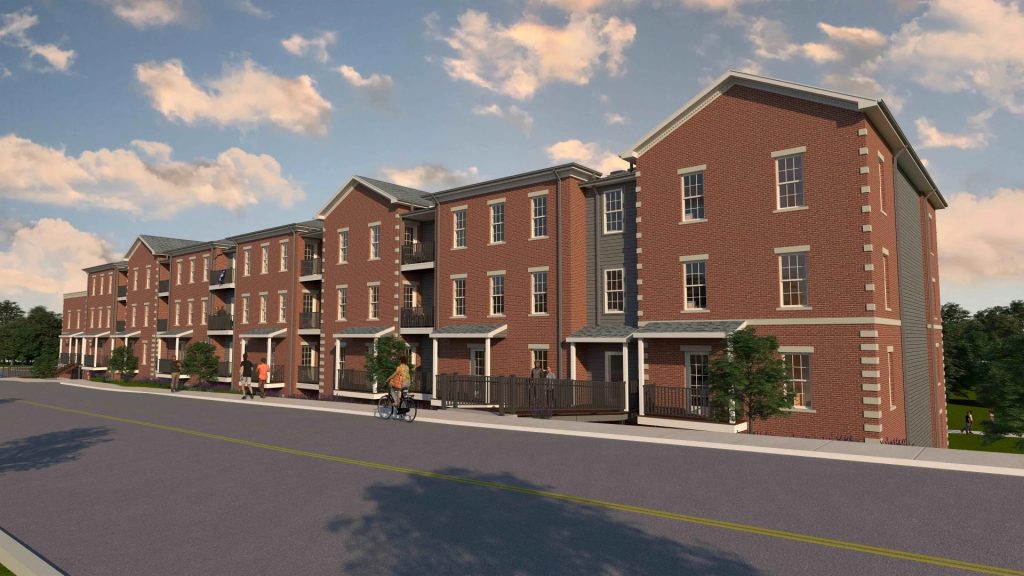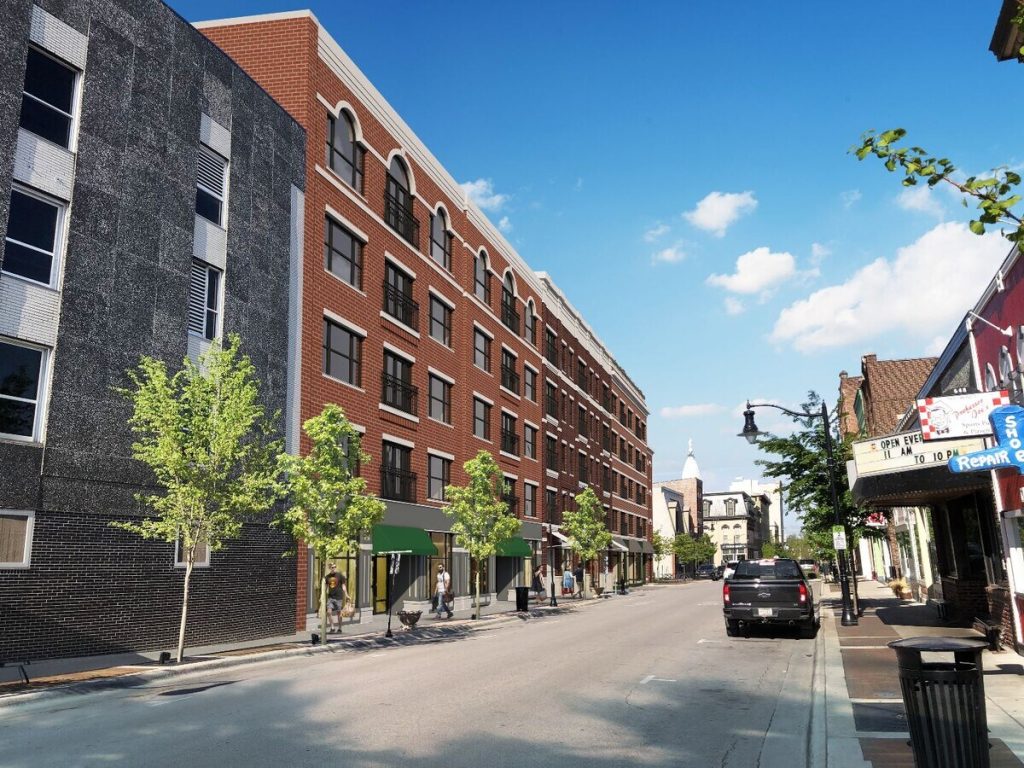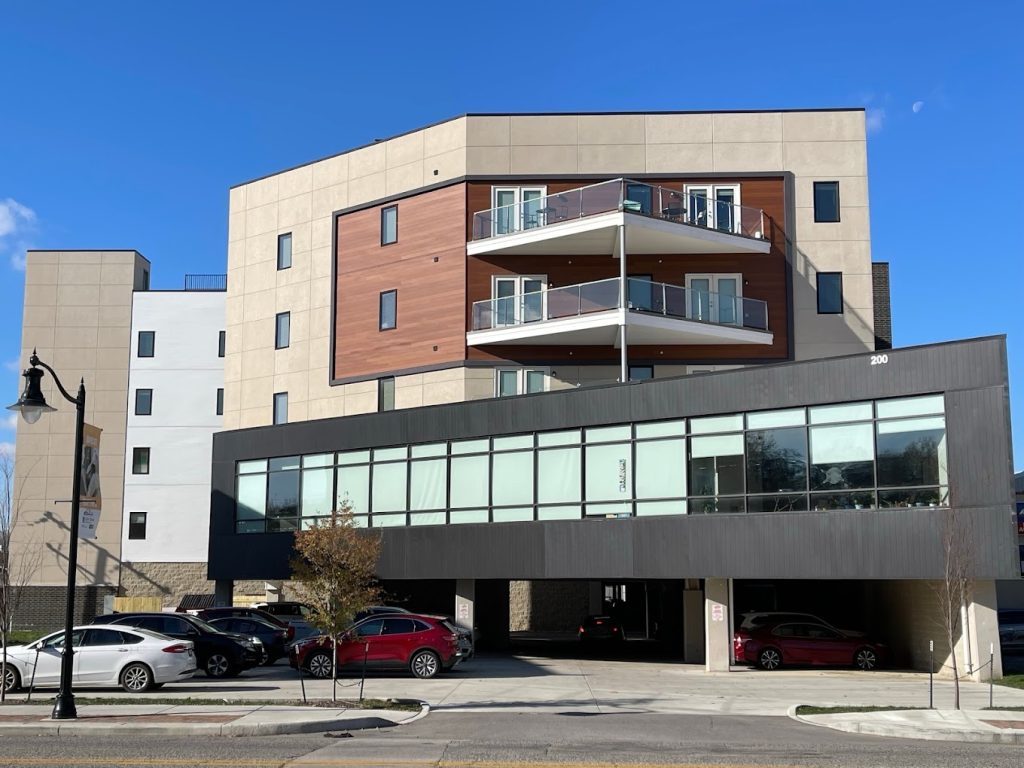BY KEN THOMPSON
PHOTOS PROVIDED
The region has seen a nearly three percent increase during the past decade, outpacing Indiana’s two percent growth. Purdue’s enrollment is up nearly 30 percent from 2012 to 50,884 for the 2022-23 school year.

Greater Lafayette is growing, from an increase in workforce to the student population at Purdue University.
The region has seen a nearly three percent increase during the past decade, outpacing Indiana’s two percent growth. Purdue’s enrollment is up nearly 30 percent from 2012 to 50,884 for the 2022-23 school year.
Satisfying the basic need for housing is a core issue facing city and county elected officials. However, a finite supply of homes and apartments limits the growth potential for Greater Lafayette.
“Since 2008, there’s hardly been any new home production,” says Amy Haase, community & regional planning principal for RDG Planning & Design. “Then when you specifically drill down to offering lower maintenance options for retirees, it’s been maybe 30 years that some of these products have been produced.”
It’s not just our population that’s getting older. The Greater Lafayette Regional Development Plan notes that 42 percent of the region’s housing is at least 50 years old. Add the fact that the supply of newer homes declined significantly between 2010-2019 compared to 2000-2009 and there’s a domino effect for buyers. The lack of new housing could be correlated with a lack of demand, and this limits existing supply. That leads to increasing the housing cost burden.
That statement is backed up by a housing study conducted by RDG.
“Compared to a lot of locations, you have an interesting mix of the student population within Tippecanoe County specifically,” Haase says. “How do you provide housing for students and for a workforce all at the same time? They are sometimes competing against each other. You have rural areas that have opportunities … to be home to many of the workers within the larger region.
“How do you restart the engine in certain ways in those areas when demand is there, but the engine has been idle for a while?”
Public and private partnerships are the solution.
The regional development plan has a goal to create more than $100 million in new private investment for residential growth within five years, including $6 million in public works matches. Based on projections, this will lead to the development of more than 400 new units throughout the region and ensure continued success in attracting new business.
Among the goals detailed in its Regional Economic Acceleration and Development Initiative (READI) proposal to the state, Greater Lafayette listed a 10 percent growth in housing stock over the next decade, increasing the labor force by 8,000 workers by 2030 and growing the population at a rate 150 percent faster than the previous decade.
“Greater Lafayette has a good, strong job market, but production maybe just hasn’t kept pace,” Haase says. “There are some really interesting projects that have happened in the Lafayette area, but how do we leverage those to think about the partnerships we need to create? The market is not working in necessarily the way we need it to. What risk-sharing do we need to be doing to make sure that the housing demand we have is being addressed?”



One such partnership success story is under construction in Delphi. The city has teamed up with Iron Men Properties on a 68-unit apartment building two blocks from the courthouse square. Delphi Mayor Anita Werling credits assistance from READI funds with the first significant development in decades.
“READI 1.0 was a key factor in the funding mix, matching $1.498 million from the city,” Werling says. “Delphi is also in an Opportunity Zone, which can provide added incentives for developers looking to reinvest gains from other projects.”
Other funding included $1.7 million in Tax Increment Financing (TIF) from the Delphi Redevelopment Commission and $3 million in tax credits from the state.
Located on property that once carried interurban cars through Delphi, the apartments are in a prime location, adjacent to Deer Creek with access to Riley Park via a pedestrian suspension bridge.
“The positive economic impact for restaurants, shops, entertainment venues and services in Delphi’s downtown cannot be overstated,” Werling says. “Iron Men Properties is leading the way, and other developers are following with a single-family residential project expected to break ground in 2024.”
Since Caterpillar’s arrival in the early 1980s, Greater Lafayette has been on “a steady roll,” according to Dennis Carson.
Carson, economic development director for Lafayette, notes the recent housing changes in the city’s downtown.
“Major projects such as the Renaissance Place have shown that there is a growing demand for living downtown as well as for additional commercial and retail space,” he says. “This watershed project was followed a few years later by the Marq and then in quick succession Towne Quarters, Nova Tower, Pullman Station, The Ellsworth, the Haywood Building and most recently, Luna Flats.
“There have also been more modest but important upper floor conversions to apartments in existing buildings. Other near downtown housing developments have contributed, such as Centennial Townhomes on Fifth Street, new single-family homes currently being built by Rider Properties on South Eighth Street and the recently approved development in the former rail corridor between South Third and South Fifth streets.”
In turn, Carson notes, that has led to strong interest in downtown becoming a destination for new shops, experiential retail and restaurants.
“During the last three years, many new specialty retailers and restaurants have opened despite the pandemic and the rise in online shopping, bucking these issues and trends in part because of the new residential development,” Carson says.
Since 2004, the City of Lafayette — through the Redevelopment Commission — has invested well over $150 million in public and private-sector downtown improvements.
If the goal of growing the population 150 percent faster than the past decade is attained, Carson says Lafayette is ready.
“The city, through the leadership of Mayor Tony Roswarski, has been working closely with the Builders Association of Greater Lafayette and others to ensure the necessary infrastructure for decades to come,” says Carson, noting a plan that will open more than 4,000 acres for future housing development on the south side of Lafayette.
“Affordability is a growing concern, and innovative lot and site development — as well as non-traditional housing types — can help address this.”
So could a Community Land Trust, whereby a separate entity owns the land and the buyer purchases only the house. Carson says the city is looking into a trust with community partners in hopes of ensuring affordability for years to come. ★




